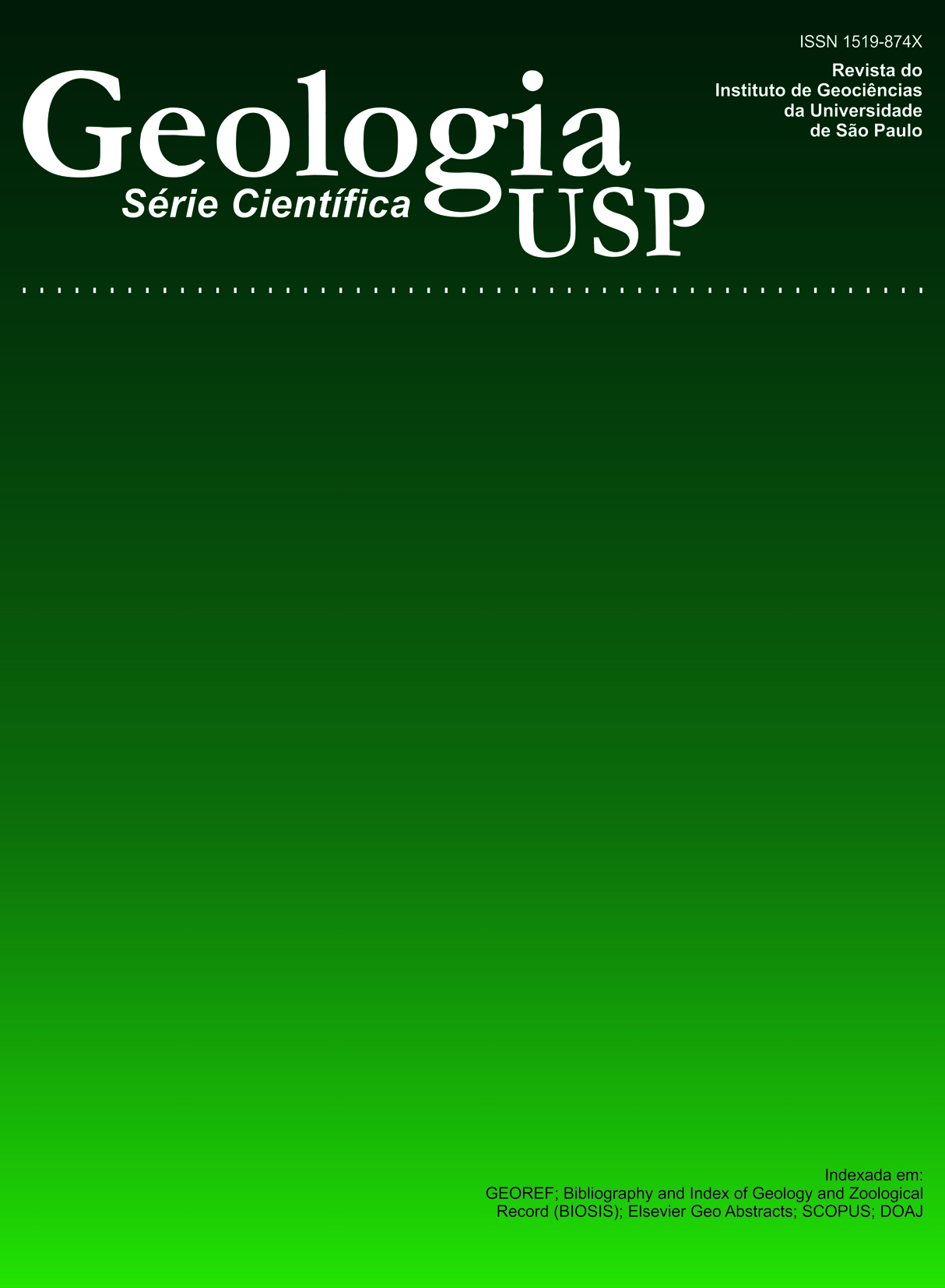Composição Química da Turmalina de Turmalinitos Estratiformes da Mina de Passagem de Mariana, Sudeste do Quadrilátero Ferrífero (MG)
DOI:
https://doi.org/10.5327/Z1519-874x2009000200001Palavras-chave:
Mina de ouro, Passagem de Mariana, Turmalinitos estratiformes, Formação Batatal, Grupo Caraça, Supergrupo MinasResumo
A mina subterrânea de Passagem de Mariana é uma das minas de ouro mais antigas do Brasil. O ouro associa-se a turmalinitos estratiformes e veios e brechas de quartzo e carbonato com turmalina. Os turmalinitos estratiformes pertencem à Formação Batatal (Grupo Caraça, Supergrupo Minas) e neles foram registrados os teores mais elevados de ouro (até 200 g/t). Três tipos de turmalina constituintes dos turmalinitos foram analisados por microssonda eletrônica e por ICP-MS. O tipo 1 corresponde à turmalina muito fina que compõe os turmalinitos maciços que ocorrem como níveis contínuos ou boudinados e como fragmentos em veios e brechas de quartzo-carbonato. A turmalina do tipo 2 é um pouco mais grossa que a do tipo 1, é zonada e compõe turmalinitos maciços e bandados. A turmalina do tipo 3 é grossa, zonada, e cresce perpendicularmente ao contato do turmalinito ou fragmentos deste com veios e brechas de quartzo-carbonato. As principais variações composicionais nos três tipos de turmalina são diminuição nos teores de SiO2 e Al2O3 e aumento nos de MgO, Na2O e F, que acompanham aumento nos teores de CaO e TiO2. Quanto aos elementos-traço, nos tipos 2 e 3, além do aumento das concentrações totais de ETR, há enriquecimento de ETR leves, Rb, Sr, Y, Cs, Th e U em relação ao tipo 1. As variações composicionais são condizentes com as condições geoquímicas reinantes durante a diagênese e o metamorfismo. Não foram encontradas evidências de contribuição de fluidos externos (e.g., magmáticos) na geração dos turmalinitos estratiformes, cuja principal fonte de boro pode ter sido os metapelitos carbonáceos da Formação Batatal. Assim, não se descarta totalmente a origem singenética dos turmalinitos, cuja formação pode ter evoluído durante o metamorfismo progressivo do início do Evento Transamazônico. A turmalina do tipo 3, por desenvolver-se no contato entre o turmalinito e veios e brechas de quartzo-carbonato, pode ter sido gerada após o pico metamórfico e durante a fase extensional do Evento Transamazônico, com a remobilização do ouro em veios e brechasDownloads
Os dados de download ainda não estão disponíveis.
Publicado
2009-06-01
Edição
Seção
Artigos
Licença
Autores que publicam nesta revista concordam com os seguintes termos:
- Autores mantém os direitos autorais e concedem à revista Geologia USP. Série Científica, o direito de primeira publicação, com o trabalho sob a licença Creative Commons BY-NC-SA (resumo da Licença: https://creativecommons.org/licenses/by-nc-sa/4.0 | texto completo da licença: https://creativecommons.org/licenses/by-nc-sa/4.0/legalcode) que permite o compartilhamento do trabalho de forma não comercial e conferindo os devidos créditos autorais da primeira publicação nesta revista.
- Autores têm autorização para assumir contratos adicionais separadamente, para distribuição não-exclusiva da versão do trabalho publicada nesta revista (publicar em repositório institucional ou como capítulo de livro), conferindo os devidos créditos autorais da primeira publicação nesta revista.
- Autores têm permissão e são estimulados a publicar e distribuir seu trabalho online (em repositórios institucionais ou na sua página pessoal) a qualquer ponto antes ou durante o processo editorial, uma vez que isso pode gerar alterações produtivas, bem como aumentar o impacto e a citação do trabalho publicado (Veja O efeito do Acesso Aberto e downloads no impacto das citações).
Como Citar
Garda, G. M., Schorscher, J. H. D., Beljavskis, P., Mansueto, M. de S., Navarro, M. S., & Mota, A. A. (2009). Composição Química da Turmalina de Turmalinitos Estratiformes da Mina de Passagem de Mariana, Sudeste do Quadrilátero Ferrífero (MG) . Geologia USP. Série Científica, 9(2), 3-22. https://doi.org/10.5327/Z1519-874x2009000200001















